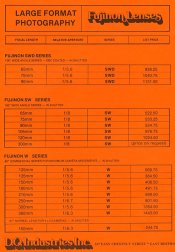Hi David:
I don't think I would be able to generalize that old lenses are better then new lenses, but there are some fantastic examples of old lenses that are astonishingly good. Personally, I use the Nikkor 28mm f2.8 AI lens for my work, and it outperforms all but a handful of current lens designs. Plus, mechanically it is a jewel.
I would have to say that it is better then the Nikkor 28mm f2.8 AI-S version, which is the current production version. The 'throw' of the AI version is significantly greater then the current version (I have both), and focusing at a distance is more accurate and a breeze with the AI---not so, with the AI-S.
Further, the AI-S update split the middle relay lens into a two-part floating element system so that close range correction could be performed. But in so doing, the corners of the AI-S version are soft until f5.6---but again, not the case with the AI version. Since almost all of my work is photographing between 2 meters or greater, the CRC version is actually a downgrade with the soft corners and imprecise focus throw.
The Zeiss Otus 28mm is a great example of design gone bad. It is so over-optimized for short distance work that it is all but useless at distance. What is the purpose of a 1.4 wide angle lens if you cannot precisely focus between 2 meters and INF? But the close range correction in the lens became the design priority, and a long throw was completely sacrificed. Bad dog!

Also, try to find a lens produced today that has a metal filter thread! For those of us that use filters constantly, a plastic lens thread is worthless and pointless.
The new Canon EOS 35mm f1.4L ii has outstanding optical performance if you don't mind the 3 stops of vignetting that make using it wide-open silly. Too many lenses today are designed with significant vignetting because the designers believe (falsely)that math will correct this issue in post production.
I am not dead set against the use of modern optics materials for designs, but my experience with aspherical lens elements has been quite mixed. I think they work well on the final projection lens for the backside of an SLR design (CV 40mm f2 SLiin), but not so well as a field equalizer to push better focus into the corners. Yes, it works, but then again it seems to effect the quality of the bokeh considerably. I have seen a lot of lenses that have little coma, great corner response, only to have harsh bokeh.
I don't think computer aided optics design has helped. I think there is too much heads-down thinking, not enough experimentation. It leads to designs that look good on paper, but make for photographically unexciting lenses. But like most industries, no one actually wants to listen to their customers anymore, so what you get, is literally what you get---plastic and all.
Pete














